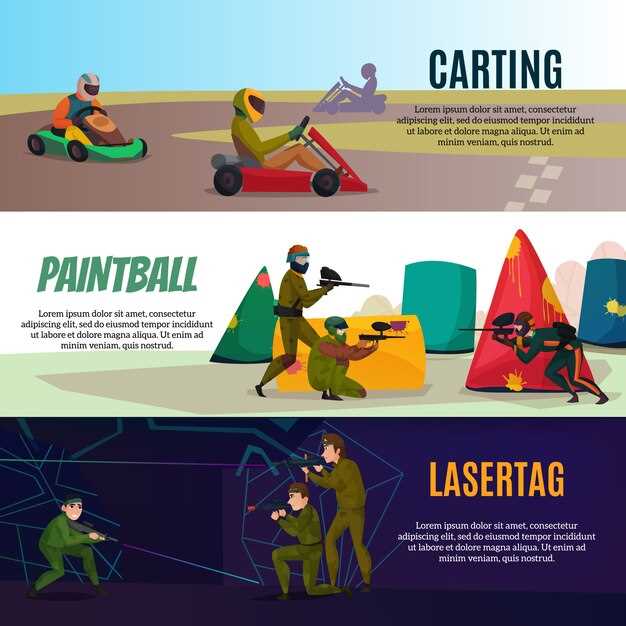
A Beginner’s Guide to Rallycross
- George Harris
- 0
- Posted on

Rallycross racing is an exciting motorsport that combines elements of rallying and circuit racing, offering fans and drivers alike a thrilling experience. This discipline takes place on mixed surface tracks, featuring both dirt and tarmac, which poses unique challenges and requires specific skills. For beginners, understanding the fundamental techniques of rallycross is essential to excel in this fast-paced environment.
In this guide, we will explore key aspects of rallycross racing techniques that every newcomer should grasp. From mastering vehicle control to learning how to navigate different surfaces effectively, you’ll discover valuable insights to enhance your performance and enjoyment of the sport. Emphasis is placed on adaptability and precision driving, which are crucial for success on the challenging courses of rallycross.
As you dive into the world of rallycross, familiarize yourself with the terminology and rules that define the sport. Gaining knowledge about racing lines, throttle control, and braking techniques will help you build a strong foundation. By integrating these elements into your driving style, you’ll be better prepared to tackle the diverse challenges encountered in rallycross racing.
Mastering the Art of Drift: Techniques for Cornering
Drifting is an essential skill in rallycross racing, allowing drivers to maintain control while navigating tight corners at high speeds. Mastering the art of drift requires a combination of technique, timing, and an understanding of vehicle dynamics. Here are key techniques to effectively execute a drift during cornering.
Understand Weight Transfer: When entering a corner, it’s crucial to manage the weight distribution of your car. As you brake, weight shifts forward. This causes the rear wheels to lose traction. To initiate a drift, brake firmly before turning in, allowing the rear to step out. Practice this weight transfer to become familiar with your car’s response.
Use the Correct Steering Input: Proper steering input is vital for maintaining a drift. As you initiate the turn, steer into the direction of the corner. This counter-steering technique helps to balance the car’s weight and keep the rear sliding. Timing is important; too much steering can cause a spin, while too little can lead to a loss of control.
Throttle Control: Modulating the throttle is key to maintaining a drift. After initiating the slide, apply the throttle smoothly. This engages the rear tires and maintains the drift angle. Too much throttle can cause the car to spin, while too little can make you lose the drift entirely. Practicing throttle control helps develop a feel for the car’s limits.
Learn to Use the Handbrake: The handbrake is a valuable tool for initiating and maintaining drifts. Pulling the handbrake while turning can help slide the rear wheels more effectively. This technique is beneficial in tight corners or during quick direction changes. Ensure that you practice this maneuver to understand its impact on your vehicle’s dynamics.
Visualize the Cornering Line: Before entering a corner, visualize your ideal line. Understanding how to position your car through the apex and exit will help you maintain momentum and control during the drift. Anticipate the steering adjustments needed as you approach the corner, allowing for smoother execution.
Practice Makes Perfect: Like any skill, mastering drifting requires practice. Find a suitable location to safely practice these techniques. Begin slowly to build confidence and gradually increase speed as you become more comfortable with the vehicle’s behavior. Consider video analysis or data telemetry to review your performance and identify areas for improvement.
With continuous practice and focus on these techniques, you will enhance your rallycross cornering skills and master the art of drift, making you a more competitive driver on the track.
Understanding Car Control: Adjusting to Different Terrain

In rallycross, mastering car control is essential due to the diverse surfaces encountered during a race. Each type of terrain–be it gravel, dirt, or asphalt–requires a unique approach to handling the vehicle effectively.
Gravel surfaces generally provide less grip compared to asphalt. When driving on gravel, it’s crucial to maintain momentum while steering. Drivers should use gentle throttle inputs to avoid losing traction. Initiating a drift is a common technique; this allows for sharper corners by using throttle and countersteering effectively. Additionally, weight transfer becomes vital; shifting weight to the rear wheels can enhance the vehicle’s rotation during turns.
Dirt tracks can vary significantly in consistency and grip. In wet or loose conditions, smooth steering and controlled acceleration are key. Drivers must be prepared for the potential of slides and should keep their focus on maintaining balance throughout the course. Adjusting tire pressure can help improve grip and control–lower pressures on softer terrains can enhance traction.
Asphalt sections provide a higher grip level but also demand precision. When navigating these areas, drivers should be conscious of their braking points and cornering speed. Smooth inputs on the steering wheel and throttle will help maintain grip. It’s important to brake in a straight line before entering a corner to achieve optimal handling. Applying throttle mid-corner can facilitate acceleration out of the turn.
Regardless of the terrain, body positioning and posture inside the car play significant roles in control. Proper seat positioning allows drivers to react quickly and efficiently. Maintaining a firm grip on the steering wheel aids in feeling the car’s movement and making necessary adjustments.
Ultimately, adapting to various terrains requires practice and experience. Each driver must develop a keen sense of their vehicle’s behavior across different surfaces, tuning their techniques accordingly. Continuous learning and mastering these adjustments will enhance overall performance in rallycross racing.
Strategic Race Planning: Choosing the Right Tires and Setup

In rallycross racing, tire choice and vehicle setup play crucial roles in overall performance. Selecting the correct tires allows drivers to maximize grip and stability on various surfaces, including dirt, asphalt, and mud. Each tire type is engineered for specific conditions, so understanding their properties is essential for optimizing race strategy.
For mixed-surface courses, consider using all-weather tires that provide versatility across different terrains. These tires offer a balance between grip on asphalt and traction on loose surfaces. However, for predominantly dirt courses, opting for dedicated rallycross tires with deeper treads can improve handling and control, especially during tight turns and jumps.
When preparing your vehicle, focus on suspension setup, ride height, and weight distribution. A softer suspension can enhance traction on uneven surfaces, while a stiffer setup contributes to better handling on fast asphalt sections. Adjusting the ride height based on track features also helps to prevent bottoming out and ensures optimal tire contact with the ground.
Furthermore, monitoring weather conditions leading up to the race is vital. Wet conditions may necessitate switching to softer compound tires to enhance grip, while dry weather might warrant harder compounds for longevity. Fine-tuning tire pressure is another critical aspect. Lowering tire pressure can increase the contact patch and improve grip but may lead to overheating and faster wear if not managed carefully.
In summary, effective race planning in rallycross hinges on a thorough understanding of tire specifications and vehicle dynamics. By strategically choosing the right tires and tailoring the setup for track conditions, drivers can gain a significant advantage, enhancing their chances of success on race day.
